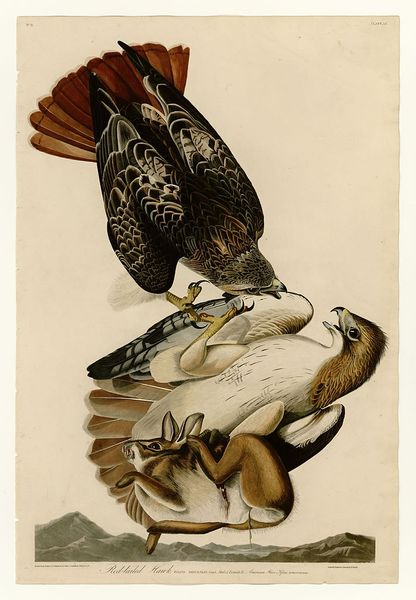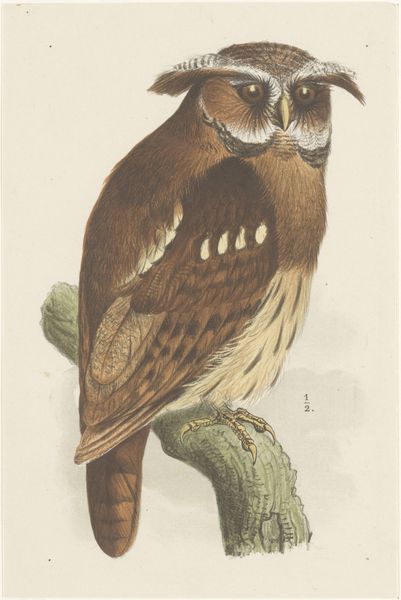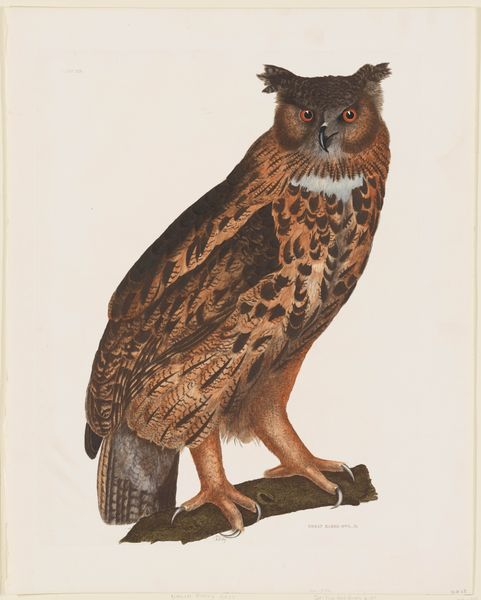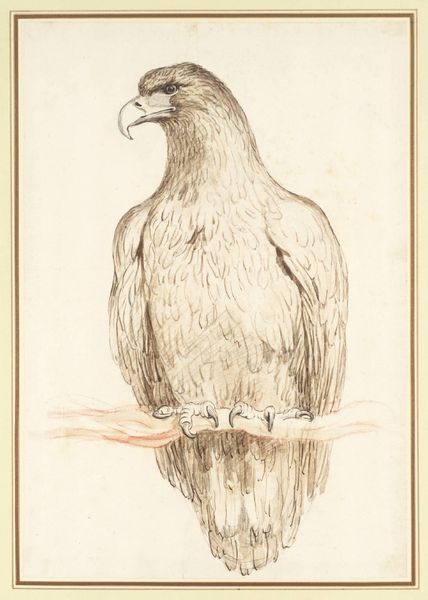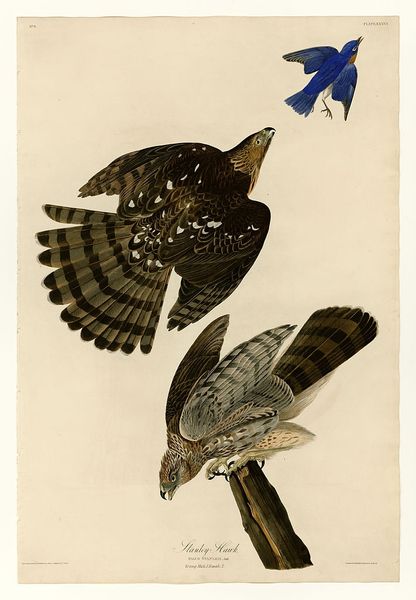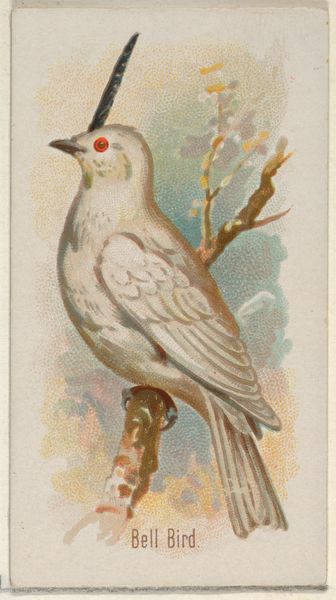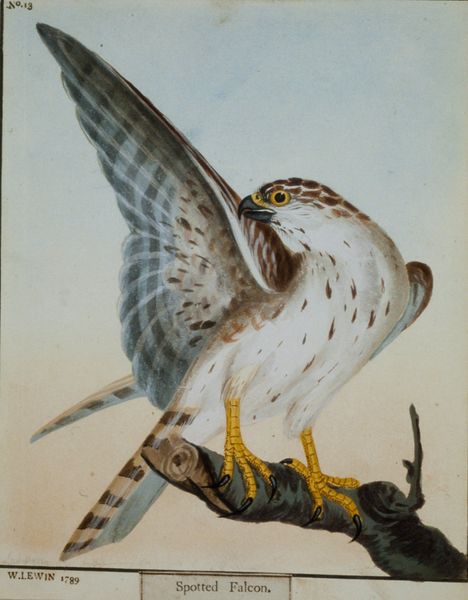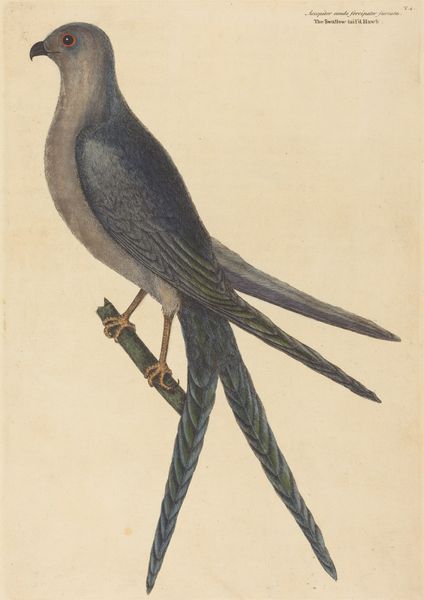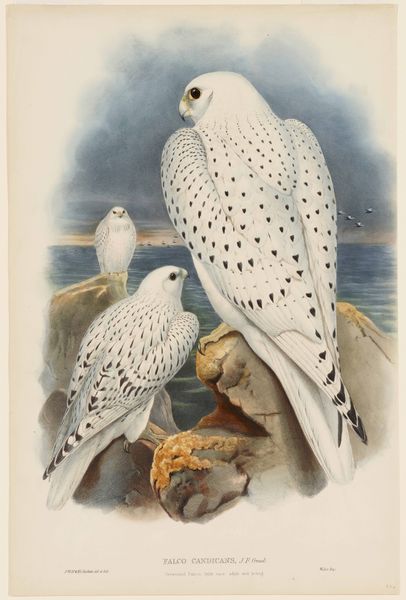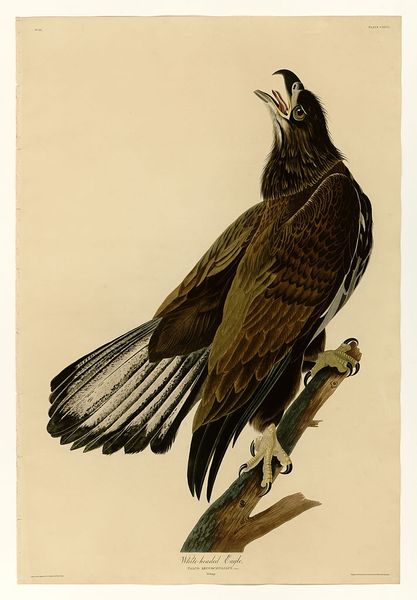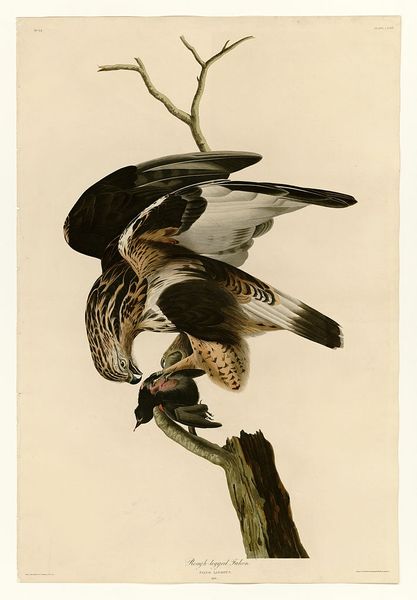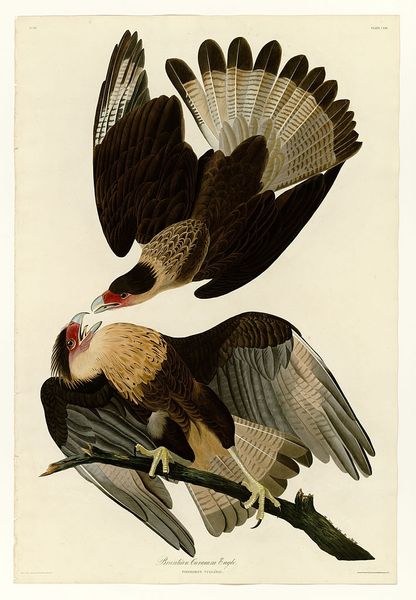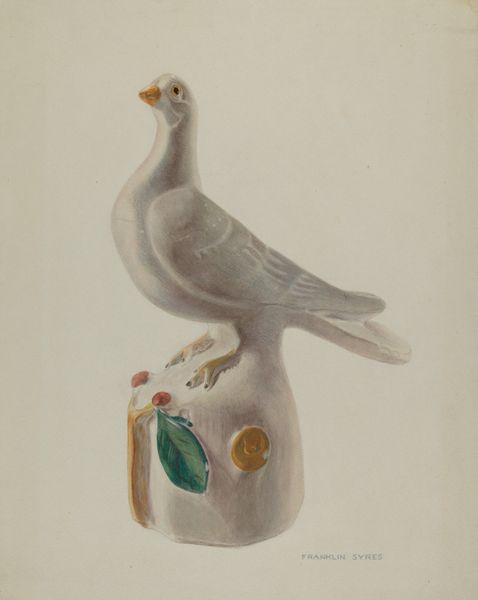
watercolor
#
portrait
#
caricature
#
watercolor
#
watercolour illustration
#
watercolor
Dimensions: height 654 mm, width 499 mm
Copyright: Rijks Museum: Open Domain
Editor: This watercolour piece is called "Witte Groenlandse valk," or "White Greenland Falcon," created before 1853 by Willem Bastiaan van Wouw, residing here at the Rijksmuseum. The way the falcon’s plumage is rendered is incredibly detailed, particularly contrasted against the rather subdued palette. How do you interpret this work, focusing on its formal elements? Curator: Observe how van Wouw utilizes the medium of watercolor to capture the texture of the falcon's feathers, creating subtle gradations of light and shadow. The composition directs our gaze upwards along the bird’s body to its hooded head. Do you notice how the hood almost anonymizes the falcon, rendering it a subject of ornithological study rather than a unique creature? Editor: I see that, especially how the ornate headdress draws my eyes. Are those decorative elements a reflection of pure aesthetic preference, or do they suggest deeper intentions? Curator: The ornamental elements serve to emphasize the status and perhaps domestication of the animal. The intricate designs of the falconry equipment create a visually complex focal point. Reflect on the contrast between this refined gear and the raw power the bird suggests; consider how it communicates societal values regarding control over nature. The composition, colour choices and representational strategy of falcon as a regal object serve an aesthetic and societal purpose. Editor: I hadn't considered the visual contrast as a statement about control and refinement. Thank you for that illuminating analysis! Curator: Likewise! Focusing on van Wouw’s strategic choices gives insights into cultural narratives about human dominance over wildlife during that era.
Comments
No comments
Be the first to comment and join the conversation on the ultimate creative platform.
